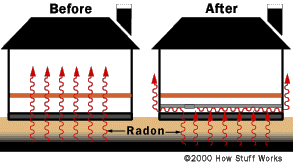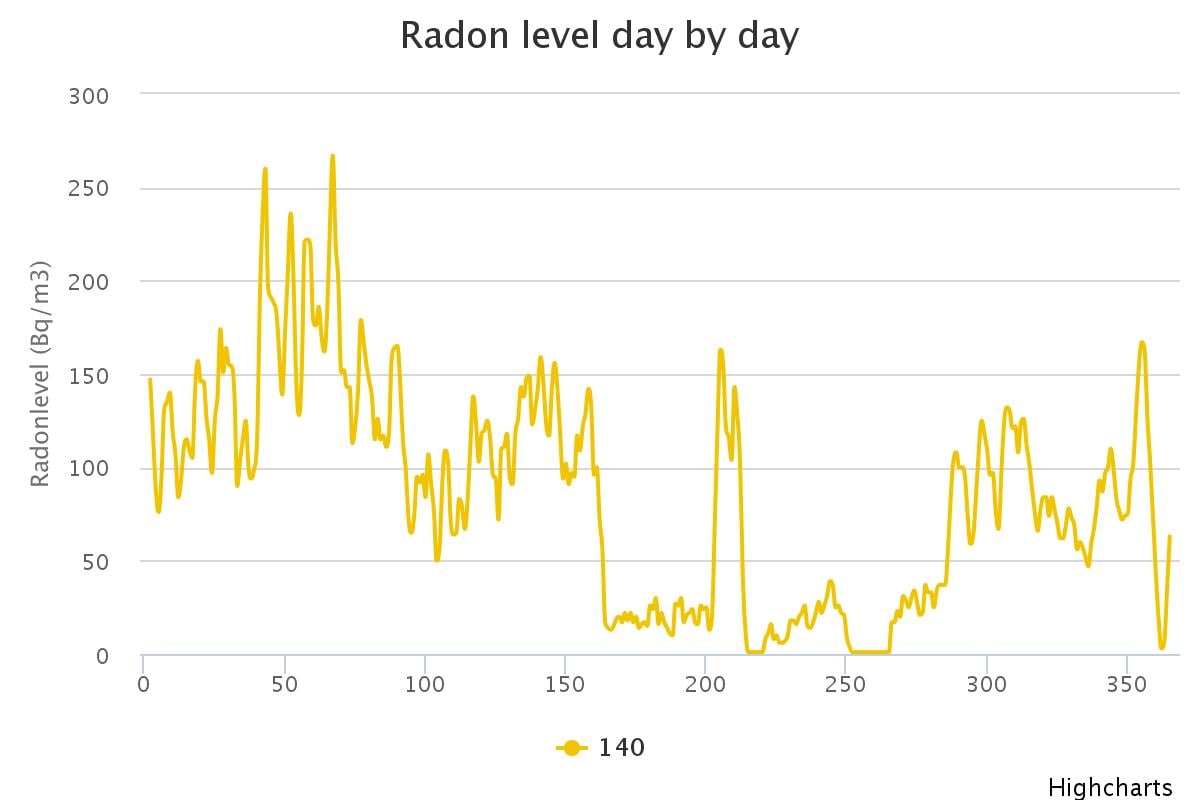The initial battery-operated wise interior air top quality display with Radon detection, including sensors for temperature, air pressure, moisture, VOCs, and CO2. Picocuries per litre of air, or pCi/L, which is just one of the favored measurements for the speed of decay in radon, amounts to one trillionth of a curie, abbreviated as pCi. The pCi unit is used in the USA due to the fact that it is called for by government legislation.
In our environment, leaving home windows open as well as fans running isn't lasting year-round, such as in winter months, along with hot, moist summer seasons. When your windows close, radon gas can be drawn into the framework once more in a matter of hours. Learn more regarding appropriate levels of radon as well as strategies used to reduce radon.
What are the chances of getting lung cancer from https://www.yelp.com/user_details?userid=V0MTFL82Lb_Dy_xC1gqR1A radon?
Granite, like any other stone, may contain veins of naturally occurring radioactive elements like uranium, thorium, and their radioactive decay products. If present, uranium, thorium or radium will decay into radon, a colorless, odorless, radioactive gas that may cause lung cancer.
Where can I obtain a Radon Examination Device?

It's good to just care for it throughout your real estate offer. In some cases the vendor pays for all of it, often they fund a credit and often there is a split. the rate of exchange between outside and also indoor air, which depends upon the building and construction of the house, the ventilation habits of the citizens, and also the air-tightness of the building. Radon is created from the natural contaminated degeneration of uranium, which is found in all rocks and soil. And it isn't as costly to employ a specialist as you may assume.
Can you smell radon?
The “safe” level of radon exposure is no radon at all. The EPA's recommended level for radon mitigation is 4.0 pCi/L or above. It's estimated that 1 in 15 American homes have an elevated level of radon gas.
Radon: A Risk in Your Home
Radon Abatement Provider has the proficiency and qualifications to ensure radon gas is gotten rid of effectively. Leaving windows open and running followers might bring about massive utility costs in winter months-- it's far more economical to have a radon mitigation system mounted.
Would you buy a house with radon?
Radon is a naturally occurring radioactive gas which may be found in indoor environments such as homes, schools, and workplaces. Radon is the most important cause of lung cancer after smoking.
For more information on just how radon can impact your health and wellness, see our frequently asked inquiries concerning the wellness threats of radon. Radon is a radioactive product of the contaminated degeneration of uranium in the dirt. It obtains sucked right into structures by the all-natural vacuum cleaner frameworks produce on the dirt (thermal stack impact). This can expose you to the hazardous radon decay products (Alpha fragments) that can create lung cancer cells.
Can I install my own radon mitigation system?
In most cases, pros charge about $1,500 to install a radon mitigation system, but you can do it yourself for only about $500 in materials. So if you're fairly handy and have some carpentry, plumbing and electrical skills, you can install your own system in a weekend and save yourself a thousand bucks!
Why is radon bad for you?
Radon produces a radioactive dust in the air we breathe. The dust is trapped in our airways and emits radiation that damages the inside of our lungs. This damage, like the damage caused by smoking, increases our risk of lung cancer.
How long do you have to be exposed to radon before it becomes a problem?
Radon is a radioactive gas and exposure to it causes 21,000 lung cancer deaths per year—only smoking causes more. Because you can't see, smell or taste radon, it's important to periodically test the air in your home. Believing you live in a region not affected by radon is just one of the myths about this deadly gas.
- When its confirmed radon level is 2.7 pCi/L or above, the World Health Organization suggest that a residence be mitigated.
- This option allows total dangers from exposure to radon, both via air and also water, to be reduced.
- High degrees of radon in residences can be properly remediated by securing such entrance factors as well as by mounting ample ventilation.
What kind of cancer is caused by radon?
Radon decays quickly, giving off tiny radioactive particles. When inhaled, these radioactive particles can damage the cells that line the lung. Long-term exposure to radon can lead to lung cancer, the only cancer proven to be associated with inhaling radon.
Is a radon level of 5 bad?
Safe radon levels. The best radon level measurement would be zero. The average global outdoor radon level varies between 5-15 Bq/m3, equal to 0.135-0.405 pCi/L. For every 99.9 Bq/m3, or every 2.7 pCI/L increase in long term radon exposure, lung cancer risk rises 16 percent.
Who is most at risk of lung cancer?
The more uranium there is, the more radon there is. That makes radon the second leading cause of lung cancer after smoking. But even minor symptoms like headaches, feeling unusually tired, itching or burning eyes, irritated skin, nasal congestion, a dry throat or nausea could be due to your home's indoor air quality.
Is radon only in the basement?
Radon is completely odorless as well as being invisible. Because it is often found unexpectedly in basements, some people mistakenly believe that it only occurs in basements. Most commonly homes with basements are suspect for having higher radon levels.

How bad is a radon level of 8?
The EPA strongly recommends radon mitigation if your radon levels are above 4 pCi/L. While radon levels below 4 still pose a health risk. They recommend you consider mitigation if your radon levels are between 2 and 4 pCi/L. They are quick to point out that there is no known safe level of radon.
What causes radon?
Being exposed to radon for a long period of time can lead to lung cancer. Radon gas in the air breaks down into tiny radioactive elements (radon progeny) that can lodge in the lining of the lungs, where they can give off radiation. This radiation can damage lung cells and eventually lead to lung cancer.
Does Radon make you tired?
The more uranium there is, the more radon there is. That makes radon the second leading cause of lung cancer after smoking. But even minor symptoms like headaches, feeling unusually tired, itching or burning eyes, irritated skin, nasal congestion, a dry throat or nausea could be due to your home's indoor air quality.
How much does radon cost per gram?
Radon is available at a cost of about $4/mCi.
Is a radon level of 2 safe?
Radon levels are measured in picocuries per liter, or pCi/L. Levels of 4 pCi/L or higher are considered hazardous. Radon levels less than 4 pCi/L still pose a risk and in many cases can be reduced, although it is difficult to reduce levels below 2 pCi/L. Once installed, a follow-up radon test is done.
How many people die each year from radon?
Radon is responsible for about 21,000 lung cancer deaths every year. About 2,900 of these deaths occur among people who have never smoked.